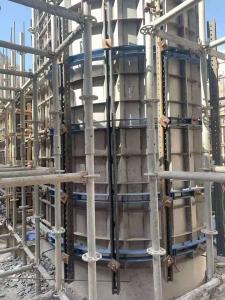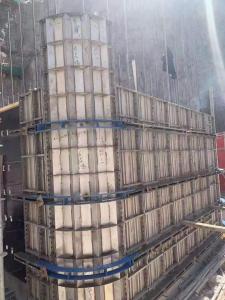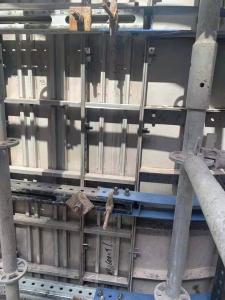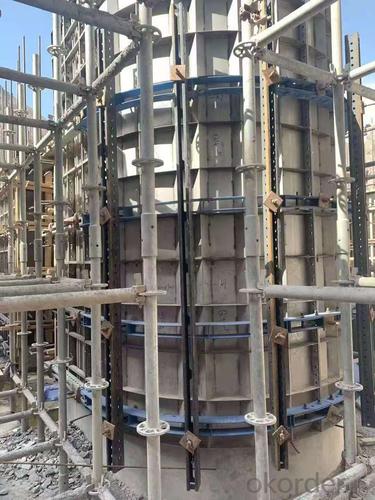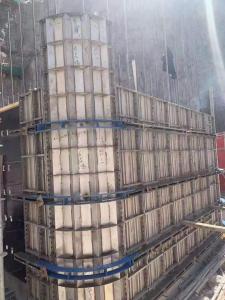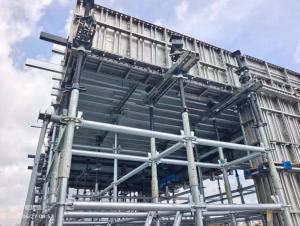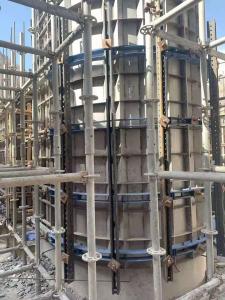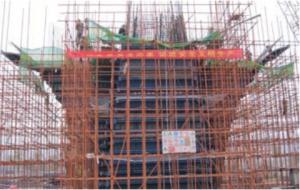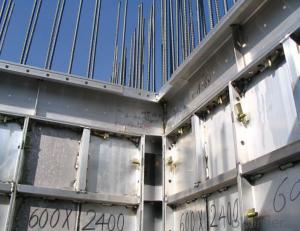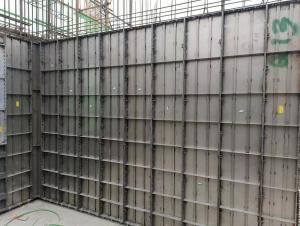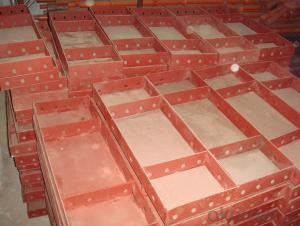Reliable supplier of formwork for construction,climbing formwork, Stainless Steel Formwork
- Loading Port:
- Shanghai
- Payment Terms:
- TT or LC
- Min Order Qty:
- 1 set
- Supply Capability:
- 1000000 set/month
OKorder Service Pledge
OKorder Financial Service
You Might Also Like
Stainless steel formwork
Replaceable size aluminum formwork :400X1200mm , 400X1500mm
CHARACTERISTICS
FAIR-FACED FINISH:
No ties through the concrete
Plywood screwed from behind
Galvanised or painted profile
HANDY:
With the same set, column boxes can be prepared with sections from 150mmx150mm up to 850mmx850mm
Adjustable with 50mm increments
Different column boxes can be assembled on top
.
Advantages:
1 Stainless steel formwork, 100% follow the design of aluminum alloy formwork system, it is interchangeable, compatible and can be used together with aluminum formwork at the same time .
2It is made of high-strength stainless steel strip by rolling and laser welding. It has good corrosion resistance and high density,is not easy to rust and has no fire hazard.
3Long service life, many turnover times, high recycling value
The number of turnovers is large, especially the characteristics of no dust, no need to brush or less mold release agent, and the characteristics of low renovation costs will bring unlimited optimistic prospects to it.
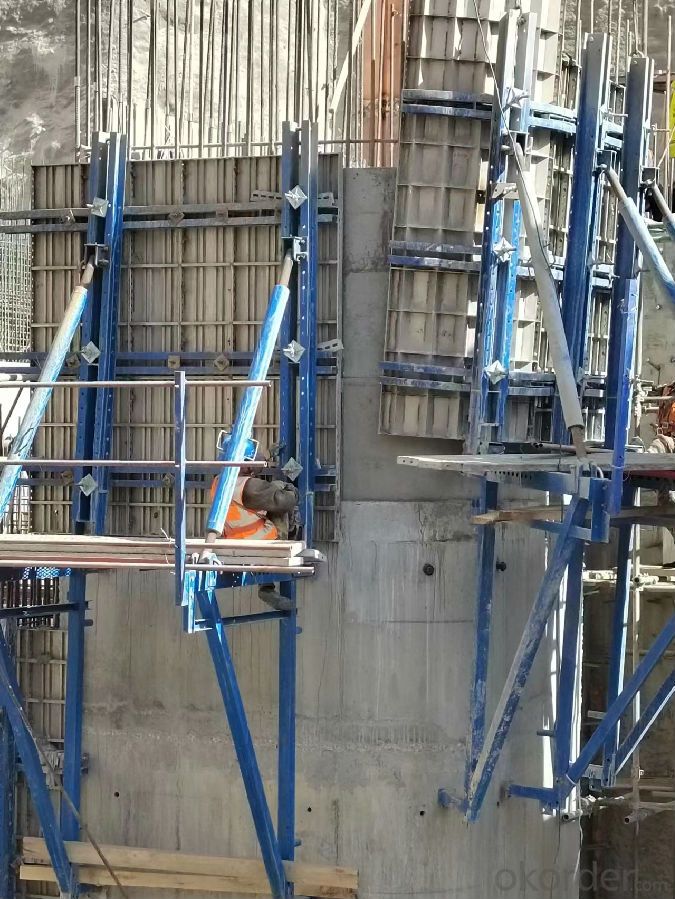
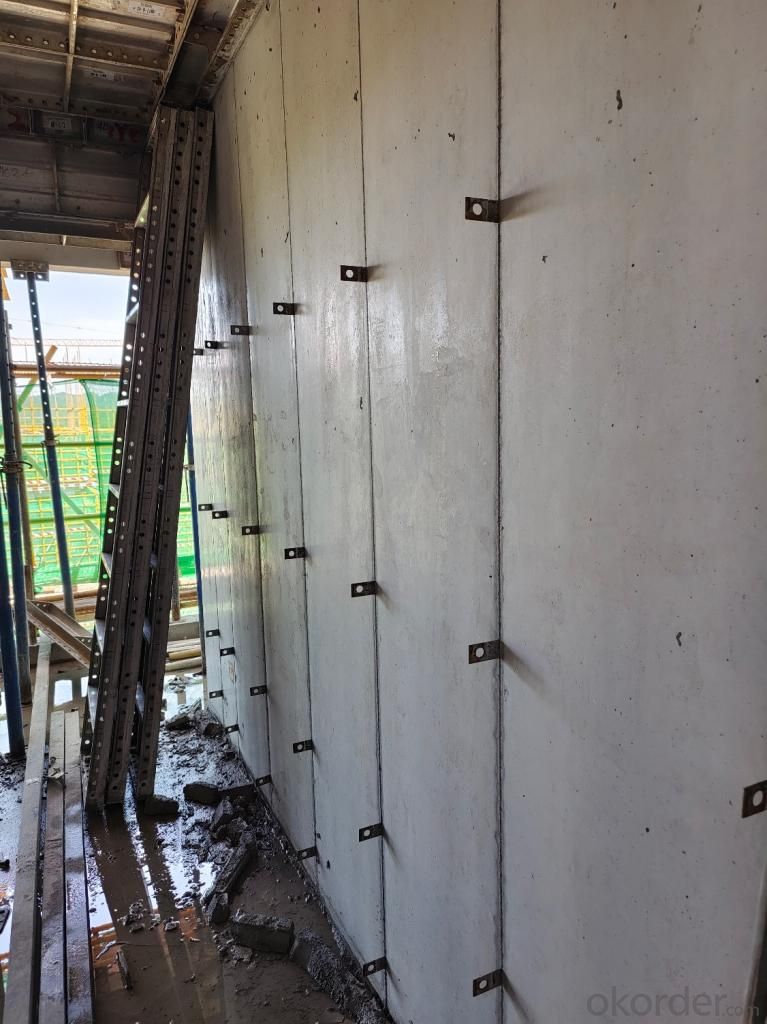
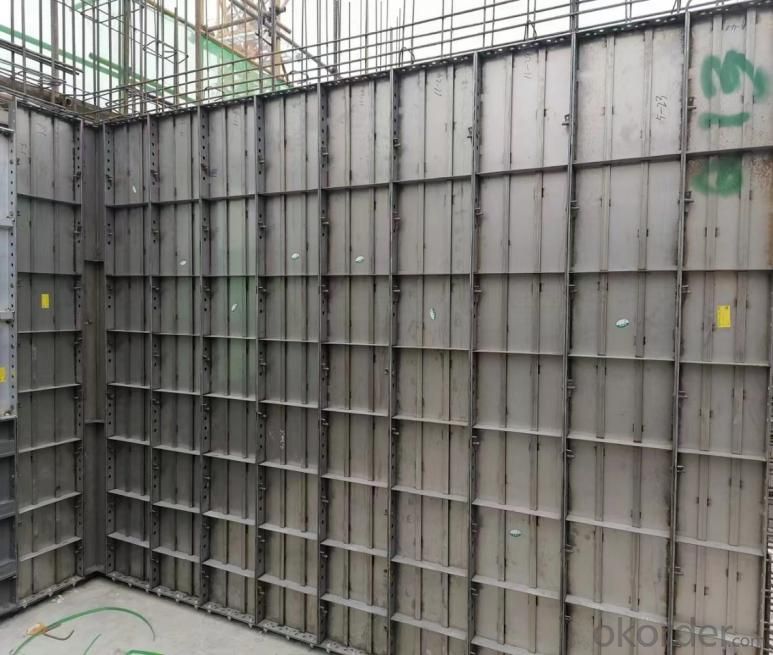
- Q: What are the disadvantages of using steel formwork?
- One disadvantage of using steel formwork is its relatively high cost compared to other types of formwork materials. Additionally, steel formwork is heavy and requires special equipment for handling and installation, making it less convenient to transport and set up on construction sites. Moreover, steel formwork needs to be properly maintained to prevent rusting and corrosion, which adds to the overall maintenance cost. Lastly, steel formwork may not be suitable for complex and intricate architectural designs that require flexible formwork systems.
- Q: What are the different surface treatments available for steel formwork panels?
- Steel formwork panels can be treated with various surface treatments to enhance their durability and performance. Some common options include: 1. Galvanization: By immersing the panels in molten zinc, a protective layer is formed on the surface. This treatment is ideal for outdoor and highly corrosive environments due to its excellent corrosion resistance. 2. Powder coating: A dry powder coating is applied to the steel surface and then cured under heat. This provides a durable and visually appealing finish with resistance to corrosion, abrasion, and chemicals. Additionally, a wide range of colors and textures can be achieved. 3. Epoxy coating: Liquid epoxy coatings are applied to the steel surface and then cured to create a hard and protective layer. This treatment offers exceptional resistance to corrosion, chemicals, and abrasion, making it suitable for harsh conditions. 4. Paint: Various types of paint can be used to create a protective layer and improve aesthetics. The level of resistance to corrosion, UV radiation, and wear depends on the specific paint used. 5. Shot blasting: High-speed steel shot or grit particles are used to blast the surface of the steel formwork panels. This process removes rust, scale, and contaminants, creating a clean and roughened profile that enhances the adhesion of subsequent coatings. 6. Hot-dip aluminizing: The panels are immersed in molten aluminum to form a thin layer on the surface. This treatment offers excellent corrosion resistance and heat reflectivity. These surface treatments provide different levels of protection against corrosion, abrasion, chemicals, and environmental factors. The choice of treatment depends on the specific application and desired durability.
- Q: Are there any specific design considerations for steel formwork?
- Yes, there are specific design considerations for steel formwork. These include factors such as the strength and stability of the steel structure, the weight-bearing capacity of the formwork, ease of assembly and disassembly, compatibility with different concrete mixtures, and the ability to withstand various site conditions such as weather and construction loads. Additionally, the design should also consider the reusability and durability of the steel formwork system to ensure cost-effectiveness and sustainability in construction projects.
- Q: How does steel formwork compare to other formwork materials in terms of cost?
- Compared to timber or plywood, steel formwork generally carries a higher price tag. However, when considering the overall expenses of a construction project, steel formwork has the potential to save costs in the long run. Although the initial cost of steel formwork may be greater, it boasts exceptional durability and can be reused multiple times without compromising its structural integrity. This reusability feature diminishes the need for constant replacement or repair, ultimately reducing the overall expenses for formwork materials in the long term. Furthermore, steel formwork provides unparalleled strength, stability, and precision in shaping concrete structures, resulting in a superior final product. This, in turn, can lead to reduced labor expenses and shorter construction durations, effectively counterbalancing the initial investment in steel formwork. Moreover, steel formwork offers heightened safety due to its fire-resistant properties and ability to withstand extreme weather conditions. This lowers the chances of accidents or damage during the construction process, which can potentially result in savings on insurance costs. Although steel formwork may initially be more costly than alternative materials, it offers a multitude of advantages that can lead to cost savings throughout the entirety of the construction process.
- Q: What are the common finishes available for steel formwork?
- Some common finishes available for steel formwork include galvanized, painted, powder coated, and epoxy coated finishes.
- Q: How is steel formwork assembled?
- Steel formwork, which is also known as steel shuttering, is a widely chosen option for construction projects due to its durability and ability to be reused. To create a secure and stable structure, a series of steps are followed during the assembly process of steel formwork. To begin, the desired configuration for the construction site is determined, and the steel formwork panels are laid out accordingly. These panels are typically made of high-quality steel and come in various sizes and shapes to meet the specific requirements of different projects. Once the panels are in place, they are connected using various fastening systems, such as clamps, bolts, or pins. This ensures that the formwork remains rigid and stable while the concrete is poured and cured. The choice of fastening system depends on the unique design and needs of the project. Once the panels are securely connected, adjustable props or braces are installed to provide additional support and stability to the formwork. These props, typically made of steel, can be adjusted in height to accommodate different pouring heights for the concrete. After the formwork structure is properly assembled and supported, it is ready for the concrete pouring stage. The formwork acts as a mold, containing the fresh concrete until it hardens and gains sufficient strength. The concrete is poured into the formwork using pumps or buckets and then vibrated or compacted to eliminate air pockets and ensure proper adhesion. Once the concrete has cured and gained enough strength, the formwork is carefully dismantled. This involves removing the props, unfastening the panels, and disassembling the formwork structure with caution. The dismantled steel formwork can then be cleaned, inspected, and reused for future construction projects, making it a cost-effective and sustainable choice. In summary, the assembly of steel formwork involves laying out and connecting the steel panels, installing adjustable props for support, pouring and curing concrete, and finally dismantling the formwork structure. This process guarantees a robust and stable formwork system that enables efficient and high-quality concrete construction.
- Q: How does steel formwork affect the overall thermal performance of the building?
- Steel formwork can have a significant impact on the overall thermal performance of a building. The thermal performance of a building refers to its ability to effectively regulate heat transfer between the interior and exterior environments. One key aspect of steel formwork that affects thermal performance is its conductivity. Steel is a highly conductive material, meaning it can easily transfer heat. This can result in higher heat transfer rates between the inside and outside of the building, which can lead to increased energy consumption for heating and cooling. Additionally, steel formwork can create thermal bridging. Thermal bridging occurs when there is a continuous path of high thermal conductivity, such as steel, that allows heat to bypass insulation. This can result in localized areas of heat loss or gain, reducing the overall effectiveness of insulation and compromising the thermal performance of the building. To mitigate these issues, various strategies can be employed when using steel formwork. One approach is to incorporate thermal breaks into the formwork system. Thermal breaks are insulating materials that are placed between the steel and the concrete, reducing the conductivity and minimizing thermal bridging. This helps to maintain a more consistent temperature throughout the building envelope and improves overall energy efficiency. Another strategy is to augment the insulation system by adding additional insulation layers to compensate for the heat transfer through the steel formwork. This can be done by applying insulation materials over the formwork or incorporating insulating layers within the concrete structure itself. Overall, while steel formwork can potentially have a negative impact on the thermal performance of a building, proper design considerations and the use of insulation and thermal break systems can help mitigate these effects and ensure a more energy-efficient and comfortable indoor environment.
- Q: Can steel formwork be used for swimming pool construction?
- Swimming pool construction can utilize steel formwork, which is a versatile and durable choice commonly employed in the construction industry for various purposes. Steel formwork offers numerous benefits, such as high strength, stability, and reusability, making it ideal for constructing swimming pool walls, floors, and other structures. By employing steel formwork, a smooth and precise finish is achieved, ensuring uniformity in the appearance of swimming pool walls and floors. It can withstand the water pressure, ensuring the structural integrity of the pool. Furthermore, steel formwork is easily assembled and disassembled, facilitating efficient construction and maintenance. Additionally, steel formwork is highly adaptable and can be customized to meet specific design requirements. It accommodates the construction of various shapes and sizes of swimming pools, including both in-ground and above-ground options. This adaptability makes steel formwork the preferred choice for swimming pool construction projects. Nevertheless, when employing steel formwork for swimming pool construction, certain factors must be considered. Proper waterproofing measures must be implemented to prevent water leakage and corrosion of the steel. Adequate reinforcement and support are also necessary to ensure the stability and durability of the pool structure. In conclusion, steel formwork is a suitable option for swimming pool construction due to its strength, durability, and versatility. Proper usage, in combination with appropriate waterproofing and reinforcement measures, can result in a robust and visually pleasing swimming pool.
- Q: Can steel formwork be customized to meet specific project requirements?
- Yes, steel formwork can be customized to meet specific project requirements. Steel formwork is highly versatile and can be easily modified and fabricated to fit any shape or size needed for a particular project. This adaptability allows for greater flexibility in construction, ensuring that the formwork meets the precise specifications and dimensions required for the project.
- Q: What are the different types of steel formwork joint solutions?
- There are several types of steel formwork joint solutions, including lap joints, butt joints, corner joints, and T-joints. These solutions are used in construction to ensure the stability and integrity of the formwork system during concrete pouring.
Send your message to us
Reliable supplier of formwork for construction,climbing formwork, Stainless Steel Formwork
- Loading Port:
- Shanghai
- Payment Terms:
- TT or LC
- Min Order Qty:
- 1 set
- Supply Capability:
- 1000000 set/month
OKorder Service Pledge
OKorder Financial Service
Similar products
Hot products
Hot Searches
